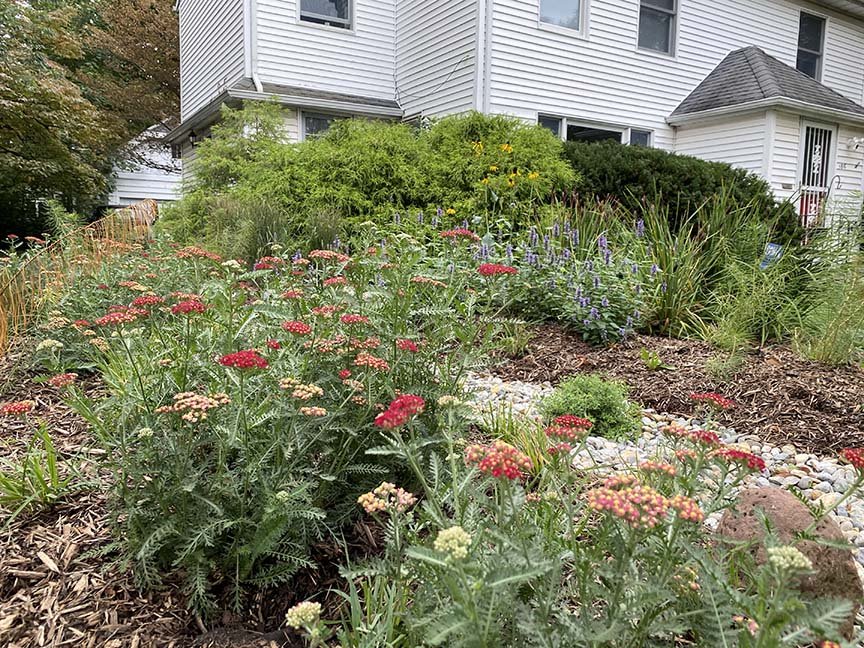Plantings and sustainability
Sustainability has always been the main focus at chambersdesign. Sustainable business is achieved by making daily choices that aim to reduce our carbon footprint and make better use the Earth’s natural resources. For our landscape design and build company, this means that we do what we can to eliminate the use of harmful chemicals, when it comes to building materials we turn our focus to natural resources, and we always strive to support nature by planting natives.
We want to touch on two different types of sustainability in this blog: passive and active. Both types are important for the prosperity of our planet and its resources. Passive sustainability is when we manage not to cause harm by avoiding pollution, CO2 emissions and the over-exploitation of resources. Active sustainability is when we don't just minimize harm to the environment but actively seek ways to improve it through some of the methods we've discussed in previous blogs such as green roofs, rain gardens, and bioswales.
Rain garden designed by Neil Chambers.
There was a time when the needs of wildlife were not taken into consideration when it came to gardening, but modern expectations are that planting should support some part of the web of nature. We do that by operating in a sustainable manner and by doing everything we can to support biodiversity. The two come hand in hand. The good news is that supporting biodiversity, and in turn supporting nature, is not difficult. By reducing invasive species, restoring natural habitats, and by planting a combination of trees, shrubs, perennials and ground-cover vegetation we can restore the balance. Promoting an array of perennial plants which lasts many years and the use of regionally native or native-ish plants will help as well.
Nature thrives in diversity, and so it should come as no surprise that the intermingled planting approach has great potential for supporting biodiversity. The possibilities for improving resources for biodiversity are greatly improved with more diverse intermingled plantings. So make sure to mix things up when you get ready to plant you garden in order to support your local natural habitat.


